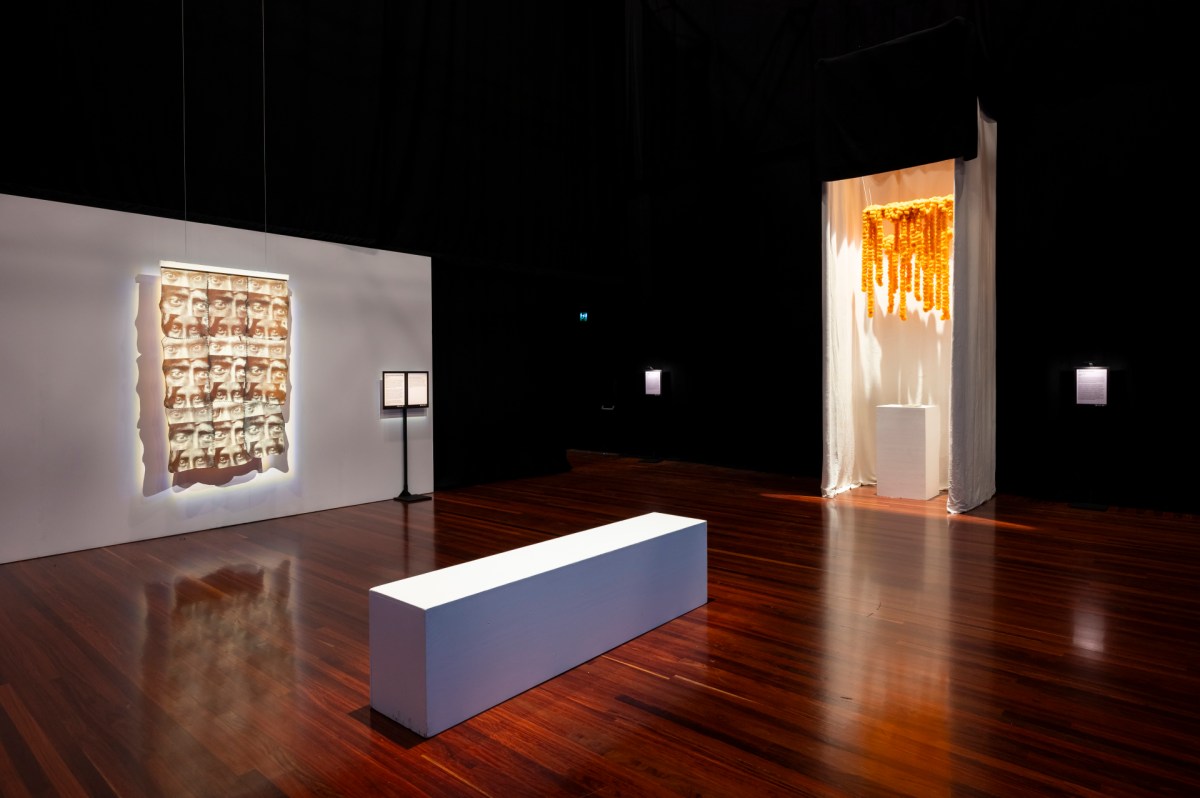Many of Melbourne’s best galleries partner with municipal organisations as part of their work, and sometimes this partnership is an occasion for truly exciting public policy. North Melbourne’s Arts House has a strong focus on diversity that enriches its status as a leading light of inner city culture and, in the case of three new exhibitions, world culture.
Curated by Vishal Kumaraswamy, the inaugural guest curator at Arts House, the exhibitions show how a position of anti-caste art originating with an Indian cultural focus can be an organising principle for works that span continents and centuries, while also featuring some of Melbourne’s best homegrown contemporary art.
The first exhibition, ಒಡಲಾಳ Odalala (‘from the depths of one being’), brought together Australian and international artists to examine histories of caste, migration, gender and sexuality through contemporary expression.
It featured the practice of Melbourne-based Elyas Alavi, whose Islamic calligraphy-inspired drawings recently featured in Another Kind, an exhibition of drawings, poems and song at Gertrude Contemporary.
Odalala at Arts House featured some of the same drawings and calligraphy, this time around a traditional Iranian altarpiece from the Shia minority of Islam. The artefact was also shown in video footage where it was used in protest, and the drawings and text accompanying it showed how dynamic the role of mysticism can be when combined with art.
The next exhibition, ನಿರೀಕ್ಷಣೆ nireekshane (‘the act of seeing’) showcased a range of traditional and expanded image-making practices from South Asia and the diaspora. Like Odalala before it, it relied on video and photography to showcase a critical re-examination of an individual’s culture. Some of these practices, like forms of corporate bondage that approximate slavery, have lasting cultural, environmental and sociological legacies.
It’s a credit to Kumaraswamy that she was aware that, in sourcing, editing, sequencing and displaying these images, the works engaged in the very colonial practices of controlling, disseminating and institutionalising knowledge that the exhibition sought to critique.
This was shown in my favourite artefact on display: documents from the work of a German philologist showing how language gathering is a colonial process that requires imaginative investment. Such investment is particularly striking since the scholar in question was the grandfather of the novelist Herman Hesse.
The piece showed how, by observing and collecting languages and cultures, whether our own or those we appropriate, we can change them. This is an irony that animated as well as questioned both exhibitions.
Read: Exhibition review: Simone Slee: Rocks holding up, Sarah Scout Presents
Finally, three windows by Osheen Siva, உயர்வு Uyirvu (‘growth and rise’) illustrate histories of resistance and futures filled with regenerative joy. The windows repurpose contemporary Hindu mythology for a powerful and pluralist critique at a time when Indian diasporas feel the pull of a particularly politicised and homogenised version of their cultures appropriated by the Hindu far right.
These rich windows will be on display until the end of May, and pay homage to a tradition and a way of seeing that allows us to look at cultures, economies and labour practices as well as art for art’s sake.
Works by:
Elyas Alavi
Priyageetha Dia
Jagath Dheerasekara
Sajan Mani
Yaseera Moosa
Tabitha Percy
Osheen Siva
Peter Waples-Crowe
ಒಡಲಾಳ Odalala, curated by Vishal Kumaraswamy, was exhibited at Arts House, North Melbourne Town Hall from 3-27 April 2024.
ನಿರೀಕ್ಷಣೆ nireekshane was exhibited at Arts House, North Melbourne Town Hall from 1 March to 27 April 2024.
Osheen Siva’s window commission, உயர்வு Uyirvu will be on display on Arts House exterior, North Melbourne Town Hall Queensberry Street, North Melbourne until 31 May 2024.





